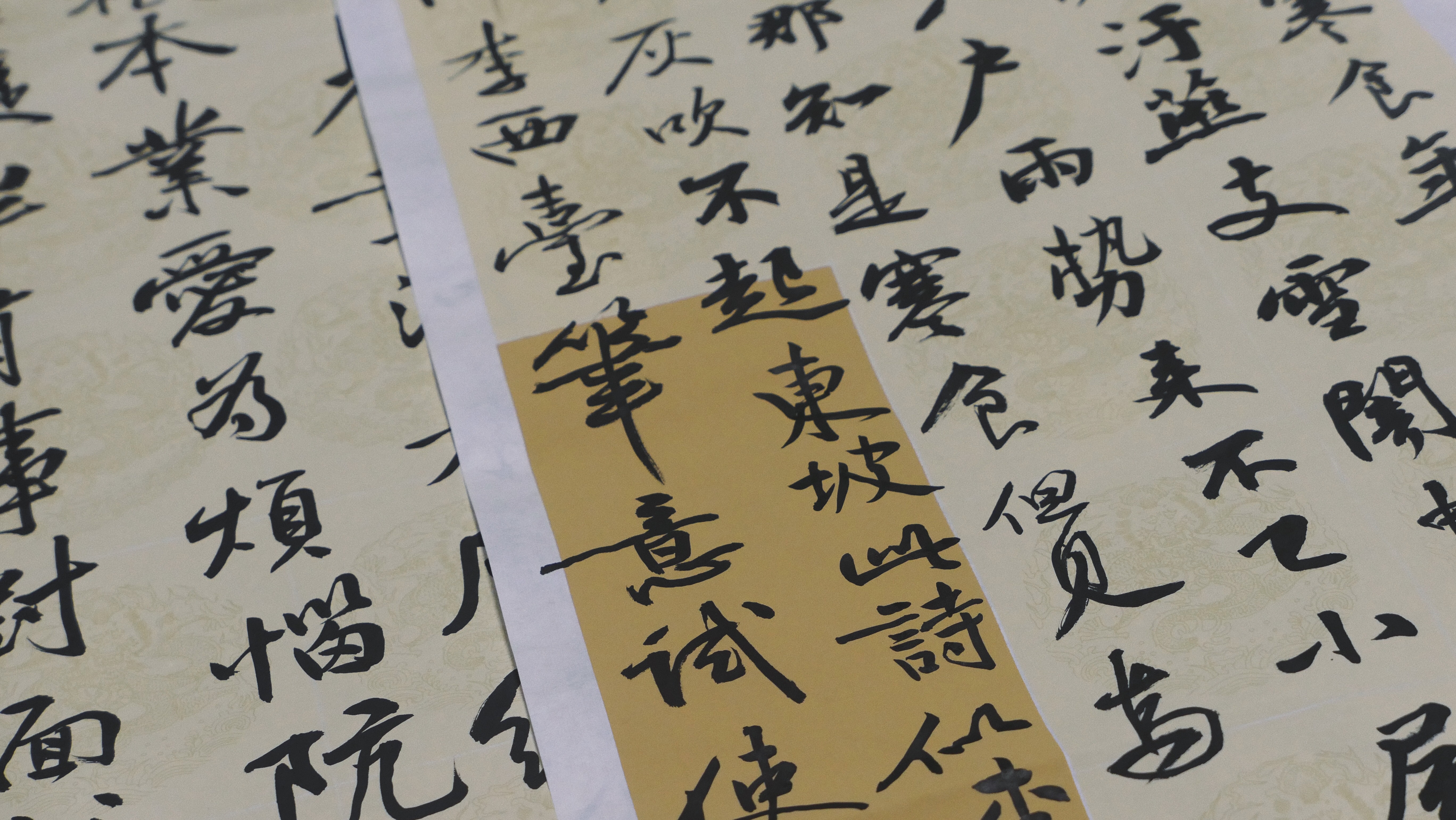
Chinese letters thinly painted on paper
The word calligraphy stems from the Greek words kallos, meaning "beauty," and graphein, meaning "to write." Together, calligraphy means "beautiful writing"–how beautiful, indeed! Today, the Merriam Webster Dictionary defines calligraphy as "artistic, stylized, or elegant handwriting or lettering; the art of producing such writing." But, how did calligraphy come to be?
Although we only see calligraphy in the form of English words and numbers, the art form actually dates back to 1600-ca in the Shang dynasty. The Chinese people used ink from burning pine resin to fill molds, which created hardened sticks. After mixing these ink-sticks with water, a calligrapher can write letters onto an oracle bone, or, eventually, paper!
Each symbol in the Chinese language is extremely complex, with each letter or number having up to 40 strokes. With this in mind, it's no wonder that calligraphy in the Shang dynasty sparked the growth of calligraphy worldwide. The calligraphers of China used delicate strokes, some thick and some thin, to craft perfect symbols (like the ones above).